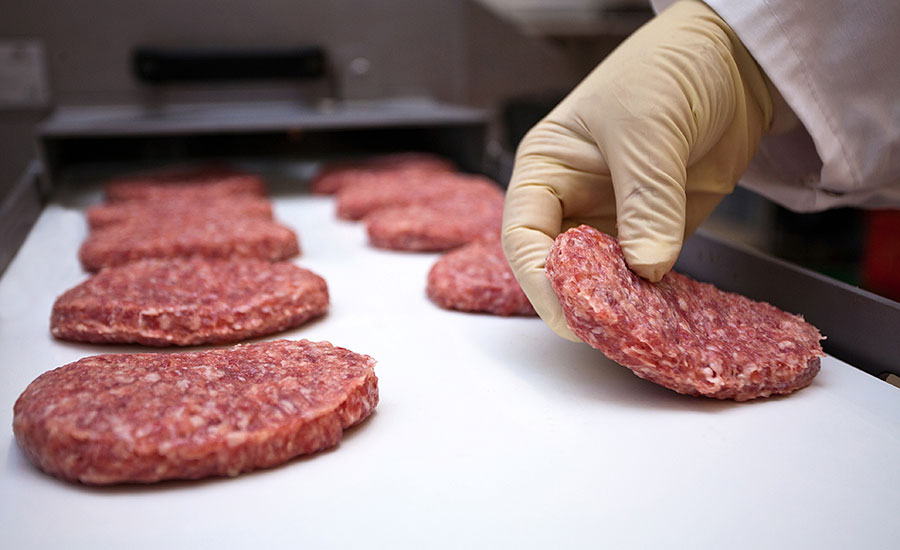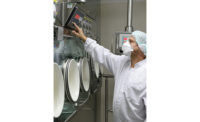The use of precise forming technologies can enable processors to more easily create high-quality meat, poultry and seafood selections while garnering greater operating efficiencies.
Elements include the ability to efficiently develop a wide range of proteins in different sizes and shapes, including round, square, oval and rectangular.
Achieving such results is not simple, particularly because of functional limitations in many devices and a lack of recent product upgrades, says Jamie Schweid, president and CEO of Schweid & Sons, a Carlstadt, N.J.-based ground beef purveyor.
“Except for the technological evolution to create rolled patties, there hasn’t been much change in the performance of machines in recent years,” he says. “The main vendor focus has been on processing speed and not necessarily on how there can be improvements to product quality.”
Among the developments has been the launch of servo-driven equipment in which there is continuous running of forming equipment rather than a constant stopping and starting during production, Schweid says.
“The faster speeds primarily benefit large processors with high volumes who are producing single ingredient and single size patties,” he says. Of greater benefit will be the launch of forming technologies that enable processors to produce multiple high-quality rolled burgers simultaneously, Schweid says.
Time is of the essence
During the creation of rolled burgers, thick, puck-like patties move from a machine mold onto a conveyor that rolls the items to the proper level or height. Such operations have become increasingly prevalent over the last decade as processors seek alternatives to the pressure-formed patties, which can be of sub-standard quality because of excessive wear on the meat, he says. Yet, producing rolled patties, which resemble handmade burgers, is more time-consuming.
“The rolling method often produces one patty or burger per stroke, as opposed to the machines that create standard patties and may produce three to five patties per stroke,” Schweid says.
While next-generation technologies are likely to increase product quality and operating efficiencies, it may take years for such devices to become prevalent because of the long life expectancy of current equipment, which often ranges from 15 to 20 years, he says. Efforts to achieve payback on their current investments will preclude the operators from immediately upgrading their technologies unless they are adding production lines, Schweid says.
“However, I haven’t seen anything that indicates there are technical evolutions in the pipeline,” he says.
While the sophistication of forming technologies can affect product quality, the state of the meat prior to processing is perhaps the major variable in determining the taste, texture and appearance of the final product, he says. Meats that are warmer than 33° F, for instance, won’t fill the forming plate properly during production, resulting in the creation of proteins that fall below the stated weight, Schweid notes. Excess grinding of proteins prior to forming can result in misshaped items that do not cook properly.
“Operators have to be very conscious of the meat temperature and treatment as the forming technology itself can only do so much,” Schweid says.
Over-mixing, elevated temperatures and high pressure can all cause variations in protein texture, adds Mark Gwin, product integration manager with the Wooster, Ohio-based Certified Angus Beef brand.
“Each step of the process is critical from grinding to packaging,” he says.
The devil is in the details
To enhance quality control, many processors, particularly those producing specialty products, are working with smaller meat batches to better enable workers to make adjustments to procedures during forming operations, Gwin says.
“Attention to detail makes all the difference,” he says. “It’s essential to control every step of production to protect the investment.”
Most operators, he notes, typically have distinct forming equipment setups and production methodologies that they devise in accordance with their specific operating circumstances.
“There has been much progress in patty formation since the time when high-pressure, form-fill was the norm,” he says. “From forming top-to-bottom into patties or intertwining strands of ground beef, processors have developed individual approaches to making unique patties.”
Despite the prospect of newer technical enhancements, which Gwin says will likely focus on hand-patty forms and texture as consumer demand for higher quality burgers continues to grow, processors will still face operational challenges. Operators, for instance, must determine the most effective production procedures and how to afford the necessary equipment. Forming machinery can cost tens of thousands of dollars.
“Especially with older equipment, you have to go beyond the nuts and bolts to control mixing, temperature and formation,” Gwin says. “It’s also extremely critical to be as gentle as possible when making ground meats. That includes monitoring the time to avoid over-mixing.”
It is important that processors continually scrutinize their technologies, including the knife, plate assembly and grinder augers, as well as operating methodologies, to help ensure product quality remains consistent, he says. NP





Report Abusive Comment